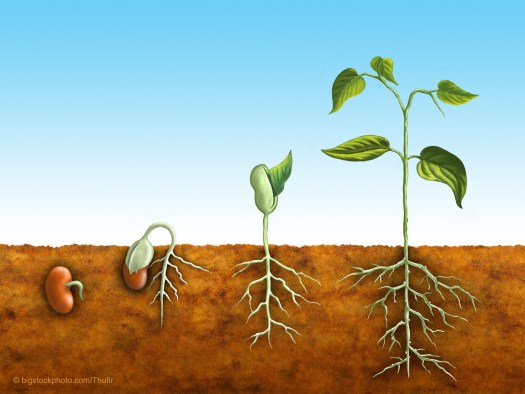
Have you ever wondered why plants grow up instead of down? Take a bean, a grain of corn, or any other seed and lay it on top of wet soil until it germinates. The root will grow out of the seed and turn downward into the soil. The shoot will go upward. It doesn’t matter which direction you position the seed when it germinates. Even if the seed germinates in a place where there is no light, the root still goes down, and the stem goes up.
After the root and stem are growing, take the seed and turn it upside down with the root pointing straight up. The root will turn around and head back down into the soil. Take a potted plant and lay it on its side so that it’s horizontal. If the dirt doesn’t fall out, the plant will make a turn and go upward and its roots downward.
Trees on a hillside don’t grow perpendicular to the slope. They grow upward, and the roots grow downward. If there is a landslide and the tree is left horizontal, it will turn and start growing upward again. Amazing, isn’t it?
This ability of plants to know up from down is called gravitropism. Only in recent years has science begun to learn the secrets of how it works. In the cells of the plant, there are particles called statoliths. They normally sit on the bottom of gravity sensing cells. When the plant is tipped, they move and send a message to the growth regulating cells that the direction of gravity has changed. The roots react positively and go toward the source of gravity. The stem responds negatively and goes in the opposite direction.
This explanation is an oversimplified description of why plants grow up. How a plant with no brain or central nervous system communicates the message of which way to grow from one cell to another is still not fully understood. Little by little, science is uncovering the mysteries of life. We still have much to learn, but it’s obvious that plants show evidence of design by a Master Engineer.
–Roland Earnst © 2018
Discover more from DOES GOD EXIST? TODAY
Subscribe to get the latest posts sent to your email.
